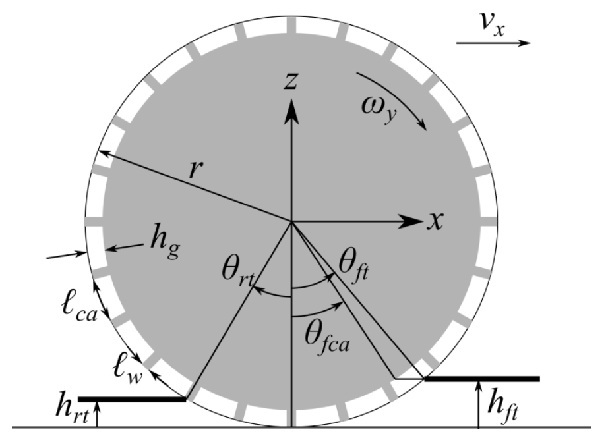Terramechanics Models
CarSim and TruckSim include sophisticated terramechanics models that simulate the interaction between tires and deformable soils. This simulation capability is essential for accurately predicting vehicle performance in off-road conditions.
Soft-Soil Interactions
The terramechanics models implement physics-based calculations of tire-soil interactions based on established principles in the field of terramechanics, providing accurate prediction of vehicle behavior on soft soils.
The models predict both elastic and plastic deformation of soil under tire loading, accounting for soil compaction, displacement, and flowing behavior characteristic of different soil types.
The models utilize Bekker-Wong soil parameters to characterize the mechanical properties of different soil types, including cohesion, friction angle, and deformation moduli.
Simulation accounts for multi-pass effects where a tire passing over previously trafficked soil experiences different interactions due to soil compaction from earlier passes.
Advanced algorithms calculate tire sinkage in soft soil based on soil properties, tire characteristics, and vehicle loading, directly affecting the vehicle's motion resistance.
Mobility Prediction
The terramechanics models provide comprehensive predictions of vehicle mobility in various off-road conditions, enabling assessment of vehicle performance and tractive capabilities.
The models accurately predict drawbar pull (net traction) capabilities for vehicles operating on soft soils, critical for evaluating off-road performance.
Detailed calculation of motion resistance factors including bulldozing resistance, compaction resistance, and internal soil resistance that impede vehicle movement on soft terrain.
The models capture the complex relationship between wheel slip and soil sinkage, which significantly impacts vehicle traction and efficiency in off-road conditions.
Accurate calculation of tractive forces at the tire-soil interface for different soil conditions and tire configurations, allowing prediction of maximum achievable traction.
Integrated Vehicle-Terrain System
The terramechanics capability is fully integrated with the vehicle dynamics models, providing a comprehensive simulation environment for off-road vehicle development and testing.
Seamless integration with existing tire models allows for comprehensive simulation of tire-soil interaction while maintaining the detailed tire dynamics needed for vehicle handling analysis.
Support for spatially variable soil properties allows simulation of terrain with varying soil types, moisture content, and compaction levels across the driving surface.
Visual representation of tire-soil interactions, including soil deformation and displacement, enhances understanding of the physical processes occurring during simulation.
Tools for identifying soil parameters from experimental data, facilitating the creation of accurate soil models representative of real-world conditions for validation studies.
